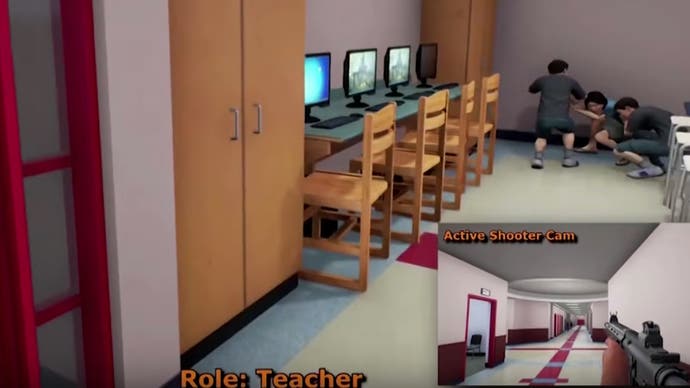New mass shooting simulator aims to help teachers respond more effectively in a crisis
"The more experience you have, the better your chances of survival".
Teachers in the US will soon be able to use a version of the US government's game-like multiplayer training simulator, known as EDGE, to practice responses to school shootings.
EDGE, which stands for Enhanced Dynamic Geo-Social Environment, is a $5.6 million simulation tool and "game-based training application" developed and used by the US army and the Department of Homeland Security. The idea is that it can realistically simulate emergencies in a flexible virtual sandbox environment, enabling first responders - law enforcement, fire, emergency medical services, and so on - to experience and role-play crisis situations and learn effective response strategies.
Currently, one scenario - an active shooter incident at a local hotel - is available to US first responder agencies, but that will be expanded next year with a second scenario based around a mass school shooting. It's been designed specifically for use by teachers.
As reported by Gizmodo, the new scenario once again appropriates game-like systems - such as digital avatars and first-person interactions with a virtual environment - for educational purposes, this time in an attempt to help teachers learn appropriate responses to armed assailants on school premises.
There are three playable roles in the new simulation: teacher, officer, and shooter. Teachers must attempt to move students to safety, the shooter roams the environment, killing indiscriminately, and officers must attempt to find and kill the shooter.
The EDGE engineering team apparently researched dispatch audio from the shooting incidents at Virginia Tech and Sandy Hook in order to create as accurate a simulation as possible. Understandably, none of the details incorporated into the experience are pleasant, but the added authenticity is a vital part of the learning process.

As Tamara Griffith, one of EDGE's chief engineers, tells Gizmodo, "The more experience you have, the better your chances of survival are. So this allows you to practice and have multiple experiences [and] know what works and what doesn't work."
To that end, the simulation incorporates crucial survival tactics as game mechanics. As scenarios play out, teachers can (and are prompted to) stay away from windows, lock doors, line up students against walls, and find items to use as barricades. The hope is that, should the worst happen, teachers will have enough virtual experience to remain focussed and calm during a real-world event.
"[Teachers] did not self-select into a role where they expect to have bullets flying near them", says Griffiths. "Unfortunately, it's becoming a reality, and so we want to give them that chance to understand what options are available to them and what might work well for them."


